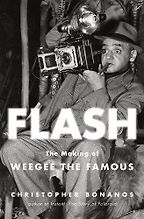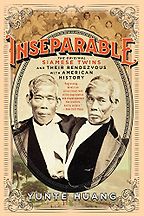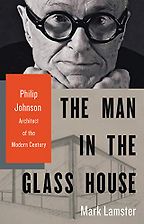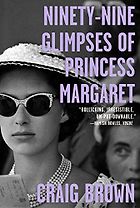Before we start talking about the shortlisted books for the 2019 biography award, perhaps you might tell me: what ingredients go into a great biography?
As chair of the 2019 National Book Critics Circle’s biography committee, I try to build a consensus for five finalists. Each committee member brings a certain calculus or set of reasons to the vastly different books in this wonderful category. Personally, I think great biographies are more than a chronicle of a life; rather, they resonate deeply with and evoke the drama of the time.
Many great biographies focus on an individual life, but increasingly I’m drawn to a group or collective biography that extends beyond an individual to say something larger, a set of individuals that says something larger about the culture and era.
Increasingly, I’ve come to understand that that the shape of a biography matters. As I’ve seen the genre evolve, we’re seeing fewer cradle-to-grave biographies that seem to cram in detail in a display of research prowess. Extensive research matters, of course, but I’m drawn to research that synthesises and respects the ironies, contradictions and messiness of life, but is expressed in ways that speak to readers.
Get the weekly Five Books newsletter
I appreciate biographies that revise conventional wisdom about someone who has been misunderstood or completely overlooked, but I’m also drawn to ones that approach life from a slant—a particularly revelatory moment in a life can be so compelling.
Let’s discuss the first of the 2019 biography finalists’ books, Christopher Bonanos’s Flash: The Making of Weegee the Famous. This is a portrait of the 1930s and 1940s crime photographer Arthur Usher Fellig. What marked this book out?
We recognised Weegee’s photographs—they are unique and unmistakable—but knew little of the man behind the camera. We had only Weegee’s—or Fellig’s—account of his own life: Weegee by Weegee. Bonanos entwined Weegee’s evolution as a person and as a photographer and placed this story in the context of the emergence of street photography and crime photography. He vivified that that moment when technology—the camera in Weegee’s hands and imagination, against the backdrop of a rapidly changing New York—captured a rich, stark world in a revolutionary way.
Weegee declared himself as “the world’s greatest living photographer” and Bonanos captures the self-mythologizing Weegee with his Speed Graphic, beating out his competition to depict accidents and disasters—as well as high-society—with his distinctive noir touch. Bonanos tracks Weegee into his sad declining years and makes a case for Weegee’s influence and his enduring images that functioned as little one-act plays of great human drama.
You mentioned that Weegee wrote his own autobiography back in 1961. So what can the publication of a new biography add to a person’s own account?
Like many of us, Weegee was probably not the most faithful witness of his own life. Biographers can use autobiographies as a lens that reveals how someone wishes to be seen. They can be helpful in that way, but they are a slant on a life and are a literary art form that shouldn’t substitute for a rigorous, illuminating biography that takes the full measure of a life.
Who doesn’t want to be hero of their own story? Bonanos brings extraordinary insight to Weegee and his times, and I’m not sure that Weegee himself would have had the perspective to make his life and work meaningful for readers. Autobiographies at midlife are meaningful and revealing in their own way, but they are not biographies that can endure the test of time. They are more a report from the front, a sanitised dispatch from the trenches of life.
And I suppose seeing an individual within their historical context must also be extremely difficult when it’s still the relatively recent past.
The recent past poses both advantages and disadvantages for a biographer. On the positive side, one can interview those who lived in that era, and sources—undigitised newspapers, for instance—can be easier to locate. That said, the distant past can be a bit more elusive, and this requires being more ingenious about locating resources and clues. Fortunately, for me, that treasure hunt is endlessly fascinating. What characters read, what they ate and how they dressed can be revealing, but my personal rule is to avoid conjecture on what characters think as that is a sticky wicket of unreliability, and no substitute for evidence.
Let’s turn to Craig Brown’s 99 Glimpses of Princess Margaret. Here in the UK, where the book is titled Ma’am Darling, Margaret is an iconic figure and Brown is very well known as a satirist. But I take it the biography translates to an American audience too?
Oh, my gosh, yes—there seems to be endless fascination with royals even on this side of the pond, from the tabloids and gossip magazine to The Crown and the naughty sister Margaret. Even apart from this endless preoccupation with the royals, Brown tapped into the universal appeal of a woman’s public downfall. In theatre, literature and art, there’s an endless fascination with a woman teetering on the precipice of public disaster, or even embarrassment.
“What characters read, what they ate and how they dressed can be revealing, but my personal rule is to avoid conjecture on what characters think”
Brown makes Margaret an interesting, complex figure, and pushes the traditional form of biography by contending with both a life and the spectacle of a life. In many ways, Brown’s book is about perceptions and how human life resists narrative boundaries and suggests that the subject and record are in an ongoing conversation with one another. It raises fascinating questions about the formation of public impressions and somehow, in creating this multi-faceted form, is also profoundly empathic.
Beyond the delicious details, Brown’s biography is a fascinating perspective on celebrity and media. I should note that I personally like biographies that push the form beyond the dutiful cradle-to-crave and are more kaleidoscopic.
Yes, at times, Brown assumes the voices of other people, other writers, and imagines alternate futures—that kind of thing. I love that his imagination as a comic can be applied to something as serious as a biography.
That’s a very interesting thought. I do think imagination is an underrated skill in biography. That isn’t to say that there should be anything less than a fidelity to fact, but rather that facts are the foundation from which biographers can imagine a life.
Absolutely. Maybe let’s talk about Yunte Huang’s Inseparable: The Original Siamese Twins and Their Rendezvous with American History, which tells the life story of the conjoined twins Chang and Eng Bunker. They were born in Thailand, came to America as sideshow attractions, and ended their life as Southern gentlemen. What a tale.
What a dramatic story, and way to look at America. They arrived as freaks, winning freedom from the oppressive men who brought them from Thailand for a traveling show, until they married two sisters who bore them 21 children, two of whom served in the Confederate army. After the Civil War, the Bunkers lost their money and went back on the road as entertainment, often accompanied by several of their children along for display. By mimicking Southern gentry, they challenged what we think of as ‘normal.’ Huang has a full command of the Bunkers’ dramatic story of how these oppressed men became oppressors.
“By mimicking Southern gentry, they challenged what we think of as ‘normal’”
As incredible as Chang and Eng’s story was to read, I gravitated toward Huang’s footnotes which revealed both his far-reaching research, his fidelity to fact and creative location of sources. As I read biographies, I often begin with footnotes. I’m eager to discern the reliability and originality of sources, and Huang’s research stretched from the rivers of Siam—now Thailand—to the hamlets of North Carolina, specifically the Bunker’s houses located in the town on which Andy Griffith’s Mayberry was modelled. The research into that Tar Heel culture is completely fascinating, and Huang really dug into the Bunker’s meticulously maintained financial records. As our reviewer Ann Fabian wrote in The National Book Review, Huang provided a master class in decoding financial ledgers.
Although the twins were inseparable, he made us see them as separate people, and their story is rich with irony, right down to marrying Southern belle sisters.
One of the fascinating details in this new biography is how the twins would alternate weeks as ‘complete master,’ while the other would ‘blank out.’ I’m going to be thinking about that for a really long time.
Right? An image that it hard to shake, and prompts readers to ask themselves about the power of blanking out, and psychological removal more generally. Inseparable is so rich in its exploration of inclusion and exclusion, the hierarchy of ethnicity, and the shifting dynamics of power.
Let’s move on to 2019 biography finalist Mark Lamster’s The Man in the Glass House: Philip Johnson, Architect of the Modern Century. Could you tell me a little bit about this book?
Bald Philip Johnson with his black, classic, round eye-glasses may be a familiar image to some. He is known as the architect for famous creations like Glass House and Four Seasons. Lamster placed Johnson within the context of the evolution of architecture and the emergence of the architect as star and chronicles the story of a great American reinvention.
Lamster draws upon his own deep knowledge of architectural history and trends, digs into Johnson’s past and traces his origins in Cleveland, Ohio to Harvard, from curator to modern and post-modern architect and winner of the inaugural Pritzker Architecture Prize. Lamster captures the forces animating Johnson in his quest for celebrity and recognition and how he made the American public pay attention to architecture.
Five Books interviews are expensive to produce. If you're enjoying this interview, please support us by donating a small amount.
Entwined with this story of Johnson’s self-designed evolution as an architect is his dark side. Lamster exposes Johnson’s contradictions, but he also discerns a straight line from the architect’s affection for fascism in the 1930s with his architecture. While this connection may not have been unknown, Lamster really illuminates it and deals with the incredible contradictions of Johnson. I’m personally drawn to contradictory characters, and biography is a wonderful way to get into that dynamic—as we’ve seen in the other NBCC Biography finalists—inclusion and exclusion, liberation and oppression, entitled and dispossessed.
Architecture is a fascinating lens through which to see the world. Last year, I loved the biography by Wendy Lesser about Louis Kahn and I’m eagerly awaiting Paul Hendrickson’s forthcoming book about Frank Lloyd Wright. I thought that Lamster wrote about post-modernism and Johnson’s architecture so deftly, and, like our other NBCC biography finalists is resonant today.
Speaking of right now, I was interested that latterly, Johnson designed buildings for Donald Trump. All of this—Trumpism and Johnson’s love of publicity—seems to speak to something very of this moment.
You’re exactly right, that’s the perfect insight. Lamster has written a biography, not an antiseptic analysis of the buildings. He captures the theatricality of Philip Johnson and connects it with the morass of right-wing politics within the trajectory that moved from neoclassical architecture to his brand of postmodernism.
We’re going to have to vote for one winner in the end. It’s going to be impossible! These are wonderful new biographies.
Well, finally, we’ve got Jane Leavy and The Big Fella: Babe Ruth and the World He Created. Why did you select this book for the 2019 biography shortlist?
Yes, back to your last thought. There’s also a great interest with The Big Fella in this day and age where athletes are such celebrities. Babe Ruth was an extraordinary baseball player and Leavy makes that case in the context of the emergence of athletic stardom and celebrity. This is not a mere recounting of statistics; Leavy gives Babe Ruth a place in cultural history.
Leavy zeroes in on the agent who set the great baseball player on a nationwide tour, a sort of barnstorming. Essentially, in that radio age, Babe Ruth campaigned to be a modern celebrity.
With this fifth 2019 finalist, one can discern a theme in these biographies. These are figures who were attuned to celebrity and to its unique power. Financial reward was part of this calibration, certainly, but with that came the imprimatur of success and a place in history.
Leavy is already an award-winning sports writer. She has written biographies of baseball icons Mickey Mantle and Sandy Koufax. But will non-sports-experts still enjoy this new biography?
Speaking as one who personally prefers reading to watching athletic competitions and has always actively avoided any games with round objects, Leavy is an invaluable guide through the world of America’s greatest pastime. I think there is enough baseball for the hard-core aficionados, but this is biography as cultural history. Again, the themes of celebrity develop through Ruth’s slightly creepy agent, but it’s also about a boy with a talent, basically an orphan who went on to great success. In many ways, this is a classic rags to riches story, albeit one with an able assist from a canny agent who came from advertising and was comfortable pitching products.
“Isn’t God supposed to be dead? Or is it poetry?”
Leavy focuses his biography on the ‘barnstorming tour’ after the 1927 World Series, when huge numbers of people came out to see Ruth and he developed a hold on the American imagination. Avoiding the minutiae about player statistics, rivalries, trades and the nuances of strategy, Leavy focuses on what was happening behind the scenes.
She also deals really well with the scandals in his life, including his philandering. She recognises his eagerness to appear with African Americans when it was a fairly brave thing to do. You see him as a kind of limited guy, but also one who came from a horrific childhood so that it was amazing that he made it to where he did, I think.
To bring our discussion to a close, a final question. Every few years, someone declares a biography dead, and yet here we are. So how would you describe the state of biography as a genre?
You’re right! Isn’t God supposed to be dead? Or is it poetry? As I reflect over the last years judging biographies, I really do believe that biography as a genre is flourishing and far from wilting away.
Please keep in mind that there’s a bit of self-interest at work here—I’m working on a collective biography right now. My sense is that the old-fashioned, cradle-to-grave biographies of Great Men that weigh in at 1,000 pages may be vanishing, but there seems to be a genuine curiosity about how others have tried to make sense of the world.
Get the weekly Five Books newsletter
Biographers have benefited by the proliferation of resources made accessible by technology. There is no substitute for walking in the footsteps of those about whom we are writing, but now we can spend time going to these places rather than devoting days to ill-functioning microfiche machines in freezing cold archives.
Until recently, the NBCC placed autobiography/memoir and biography in a single committee. My initial fret about separating them into two weaker categories was unfounded because there’s been a real resurgence in high-quality biographies, and prizes that reward them. There’s also a wonderful group called Bio, the Biographers International Organisation, that goes beyond prizes and supports the genre with resources and a conference devoted to the craft of biography.
So, onward biography! And to deciding which of these five wonderful biography finalists will be chosen collectively by the National Book Critics Circle to win the 2019 award in Biography. There were so many other truly excellent biographies this year and so many of them deserve more attention.
To answer your question: Biography is far from dead. Biography, like so much literature, evolves and flourishes. As long as we have discerning readers, they will push and elevate the writing and newly energised methods of research and reporting that yield excellent new biographies.
The National Book Critics Circle winners will be announced in a public ceremony on March 14, 2019, following a reading by finalists on March 13, 2019.
Read more in the best books of 2019 interview series.
Interview by Cal Flyn, Deputy Editor
March 6, 2019
Five Books aims to keep its book recommendations and interviews up to date. If you are the interviewee and would like to update your choice of books (or even just what you say about them) please email us at [email protected]












